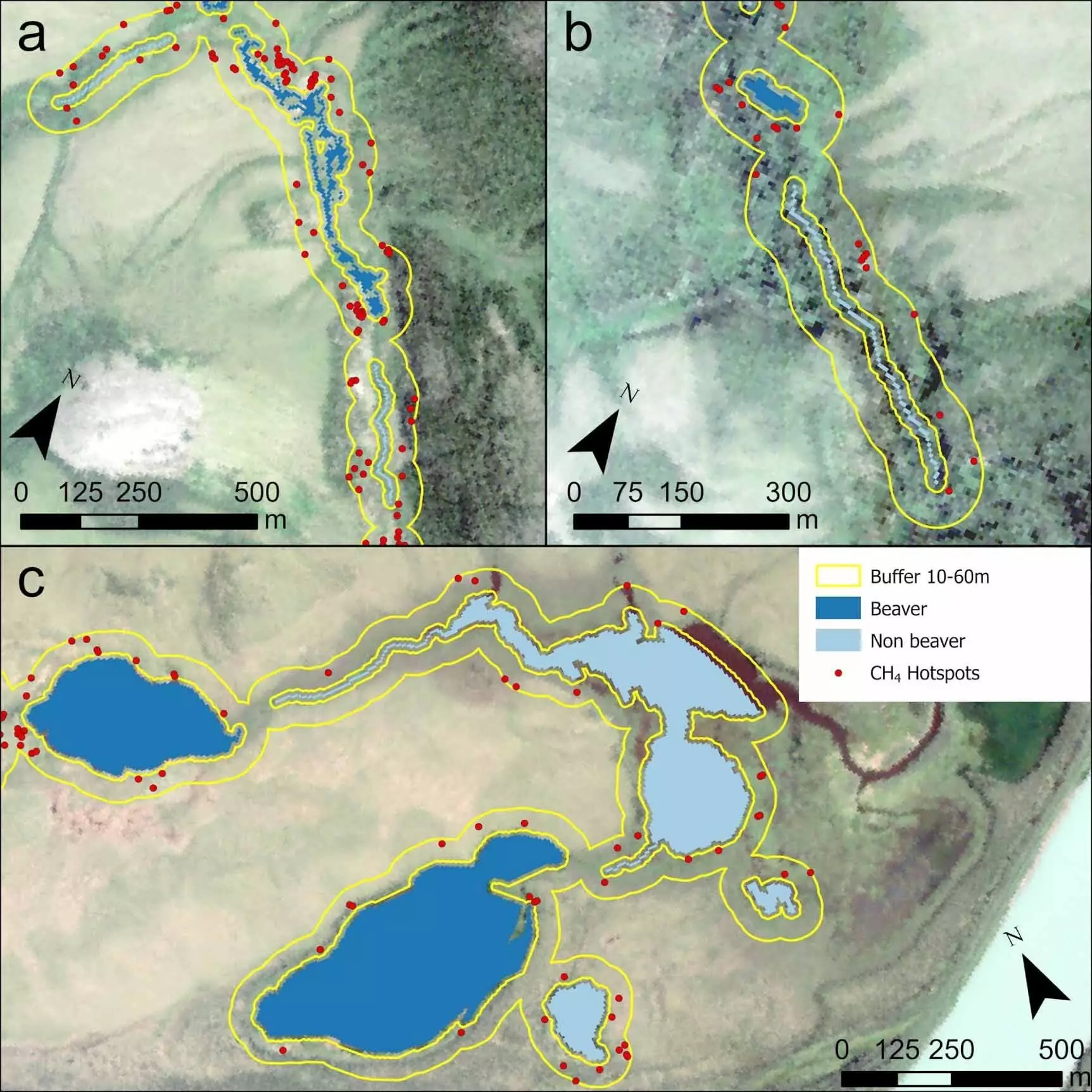The infiltration of beavers into the Arctic tundra has raised concerns about the intensified release of methane, a potent greenhouse gas, into the atmosphere. Beavers are well-known for their dam-building activities, which lead to flooding and the transformation of Arctic streams into ponds. Consequently, these beaver ponds, accompanied by the inundation of vegetation, create an environment rich in organic sediment. The decomposition of this material triggers the release of methane. Furthermore, the thawing of organic-rich permafrost due to the heat carried by the spreading water also contributes to the release of this greenhouse gas. A study published in Environmental Research Letters in July demonstrates the association between Arctic beavers and increased methane emissions. The study introduces an alarming concern regarding beaver engineering in the Arctic and its potential impact on methane release.
The lead author of the study, Jason Clark, a former postdoctoral fellow at the University of Alaska Fairbanks Geophysical Institute, along with his adviser and co-author, Research Professor Ken Tape, conducted extensive research on the migration of beavers northward and their ecological influence on the Arctic. The study reveals the existence of numerous methane hotspots adjacent to beaver ponds, with a decrease in their presence as one moves away from the pond. This research is the first to establish a link between the proliferation of beaver ponds and landscape-scale methane emissions. It suggests that the introduction of beavers into the Arctic will initially lead to an increase in methane release. However, the long-term implications remain uncertain, as current data is limited and inconclusive.
Methane and Climate Change
Methane is a potent greenhouse gas, with a heat-trapping capability 25 times greater than carbon dioxide. According to the U.S. Environmental Protection Agency, it contributes to approximately 20 percent of global greenhouse gas emissions. Human activities have substantially augmented atmospheric methane concentrations over the past two centuries. The findings of the study serve as a cause for concern due to the potential of beaver-induced methane emissions to exacerbate global climate change.
To gather data for their research, the scientists focused on an area spanning 166 square miles in the lower Noatak River basin of Northwest Alaska. They employed airborne hyperspectral imaging through NASA’s Arctic-Boreal Vulnerability Experiment program. Unlike conventional cameras that image in the primary colors of red, green, and blue, hyperspectral cameras capture images in hundreds of wavelengths across the electromagnetic spectrum, including those invisible to the human eye. The researchers compared the locations of methane hotspots with the positions of 118 beaver ponds, as well as nearby unaffected stream reaches and lakes. They found a significantly higher concentration of methane hotspots surrounding the beaver ponds, within a radius of approximately 200 feet from the water bodies. The study innovatively used these overlapping datasets to draw the connections between beaver pond distribution and methane emissions.
Future Research and Implications
The study highlights the need for additional research to establish a deeper understanding of the complex relationship between beaver migration and Arctic methane release. Due to the limited scope of the study, additional investigations are necessary to analyze the long-term consequences of beaver engineering on methane emissions. The ecological impact of beavers in the Arctic is a subject of considerable importance, given the significance of methane as a greenhouse gas. Further research and monitoring will help inform better management practices to mitigate the potential effects of beavers on Arctic ecosystems and climate change.
The infiltration of beavers in the Arctic tundra has raised concerns about the release of methane, a potent greenhouse gas, into the atmosphere. The study discussed in this article establishes a connection between the proliferation of beaver ponds and landscape-scale methane emissions. While the initial findings suggest an increase in methane release due to beaver engineering, the long-term implications remain uncertain. Methane plays a significant role in global climate change, and the study highlights the urgent need for further research to comprehensively assess the impact of beaver migration on Arctic methane release. Understanding this relationship is vital for developing effective strategies to manage potential ecological consequences and reduce greenhouse gas emissions.


Leave a Reply